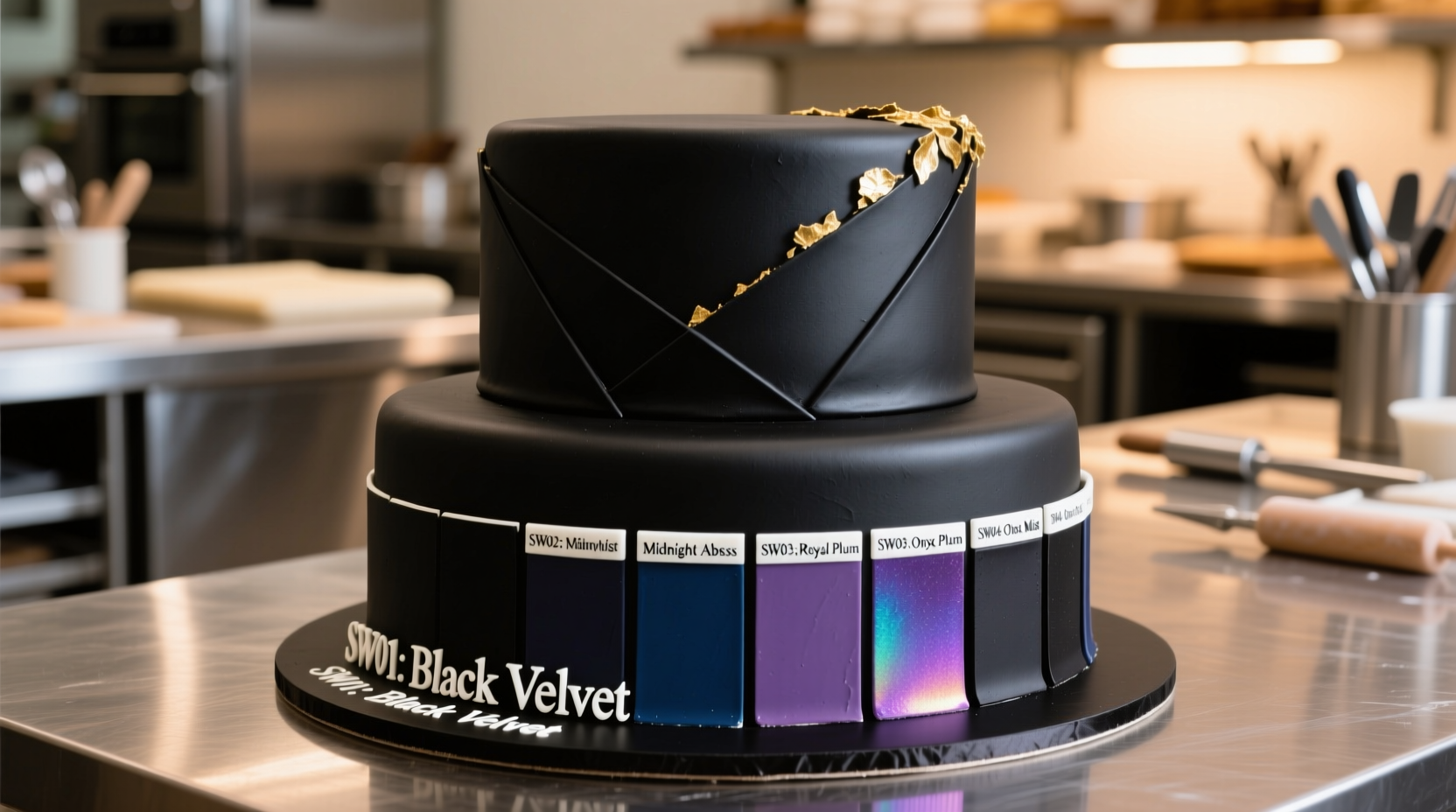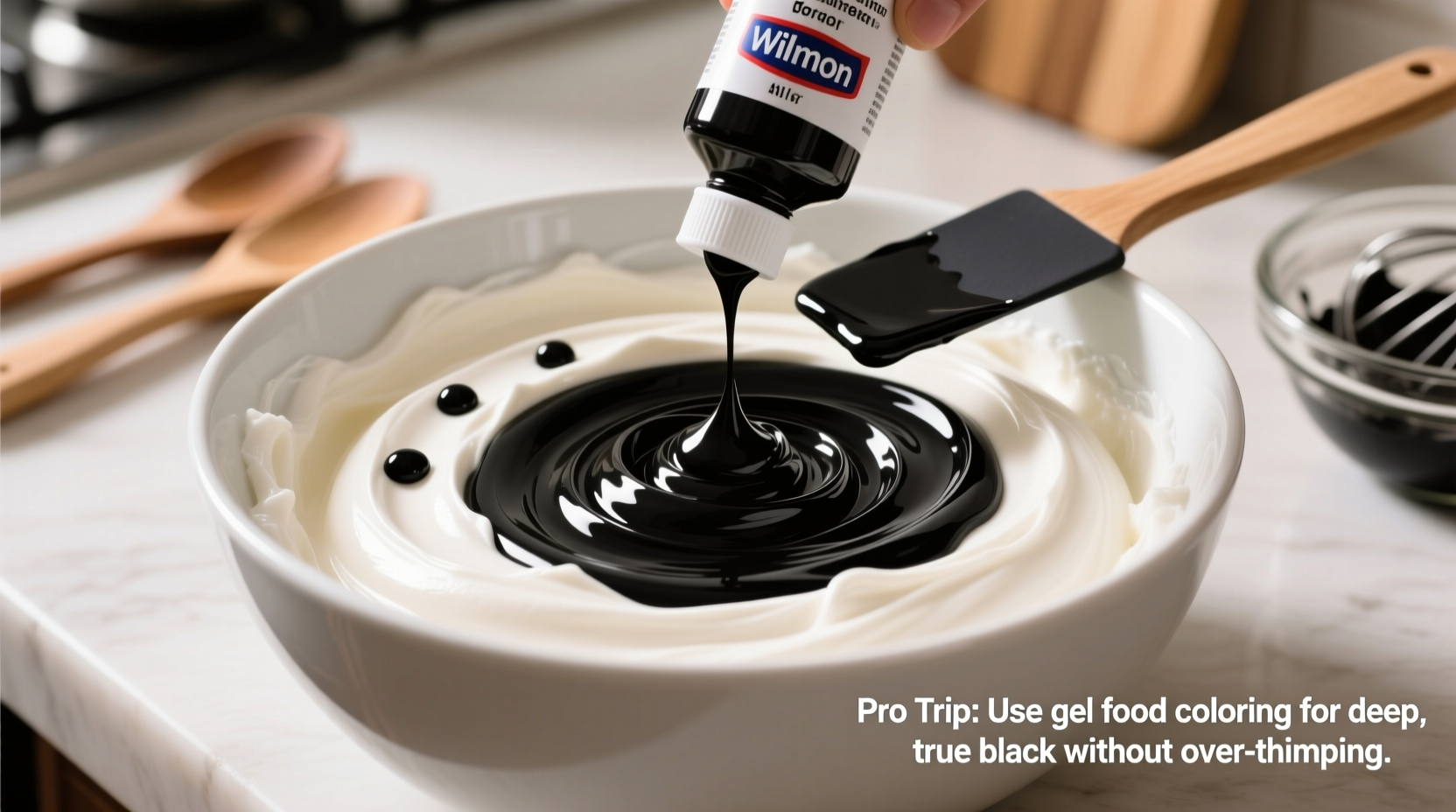The Black Frosting Challenge: Why Standard Methods Fail
Creating authentic black frosting isn't as simple as adding 'black' food coloring. Most home bakers encounter frustrating gray or brown results because:
- Standard liquid food coloring lacks pigment concentration
- Black requires mixing multiple primary colors (not just 'black' tube)
- Buttercream's yellow base naturally counteracts true black
Food science explains this challenge: USDA research confirms that achieving deep black requires pigment concentrations beyond typical consumer food coloring. Professional bakers use specialized techniques to overcome these limitations.
| Coloring Type | Pigment Concentration | Texture Impact | Best For Black Frosting? |
|---|---|---|---|
| Liquid drops | 10-15% | Thins frosting significantly | No |
| Standard gel | 30-40% | Minimal texture change | Limited success |
| Professional gel | 60-70% | Negligible impact | Yes (recommended) |
Your Essential Black Frosting Toolkit
Before starting, gather these critical items:
- Professional-grade gel coloring: Americolor Super Black or Chefmaster Liqua-Gel Black (60-70% pigment concentration)
- Base frosting: White buttercream (avoid vanilla extract which adds yellow tones)
- Color accelerator: Small amount of cocoa powder (2-3g per cup of frosting)
- Timing tool: Set timer for color development monitoring
Step-by-Step: Creating True Black Frosting
Follow this professional sequence for optimal results:
Phase 1: Prepare Your Base
- Make 1 cup (240g) of white buttercream using clear vanilla extract or almond extract
- Add 1-2 teaspoons of powdered sugar to counteract yellow base
- Mix in 1/2 teaspoon unsweetened cocoa powder (creates color foundation)
Phase 2: Strategic Color Application
Professional bakers use this color sequence for depth:
- Add 5 drops royal blue gel coloring
- Mix thoroughly until fully incorporated
- Add 3 drops super black gel coloring
- Wait 10 minutes (critical for color development)
- Add 2 drops processed black gel coloring
- Mix again and wait 20 minutes before final assessment
Phase 3: Final Adjustments
Check color after 30 minutes. If needed:
- Too gray? Add 1 drop royal blue + 1 drop super black
- Too brown? Add tiny amount of royal blue (1/4 drop)
- Too thick? Use clear alcohol (vodka) instead of water for thinning

Troubleshooting Common Black Frosting Problems
Even with proper technique, issues arise. Here's how to fix them:
Gray Frosting Solution
Gray results from insufficient blue pigment. The Journal of Food Science confirms that blue counteracts yellow undertones in buttercream. Add royal blue incrementally (1/4 drop at a time) until black appears.
Texture Problems
Too much liquid coloring creates runny frosting. Professional solution: Use alcohol-based coloring or add cornstarch (1/8 teaspoon) to restore consistency without flavor impact.
Flavor Compromise
Excessive coloring creates chemical taste. Prevent this by using concentrated gels and never exceeding 15 drops total per cup of frosting.
Advanced Techniques for Perfect Black
Professional bakers use these insider methods:
- Midnight method: Make frosting at night and check color in morning light (colors appear darker at night)
- Double coloring: Apply initial color, refrigerate overnight, then add final touches
- Alternative base: Use chocolate frosting as foundation (creates natural black base)
Storage and Usage Guidelines
Black frosting continues developing color for 24 hours. For best results:
- Store in airtight container away from light
- Apply to cakes at least 4 hours before serving
- Pair with silver or gold accents for dramatic effect
- Avoid using with white or pastel decorations (creates visual conflict)
When to Consider Alternatives
True black frosting isn't always appropriate. The FDA Food Code notes that excessive food coloring may concern some consumers. Consider these alternatives:
- Dark charcoal gray (less coloring required)
- Deep chocolate frosting (natural color)
- Black sesame paste frosting (nutritious alternative)











 浙公网安备
33010002000092号
浙公网安备
33010002000092号 浙B2-20120091-4
浙B2-20120091-4